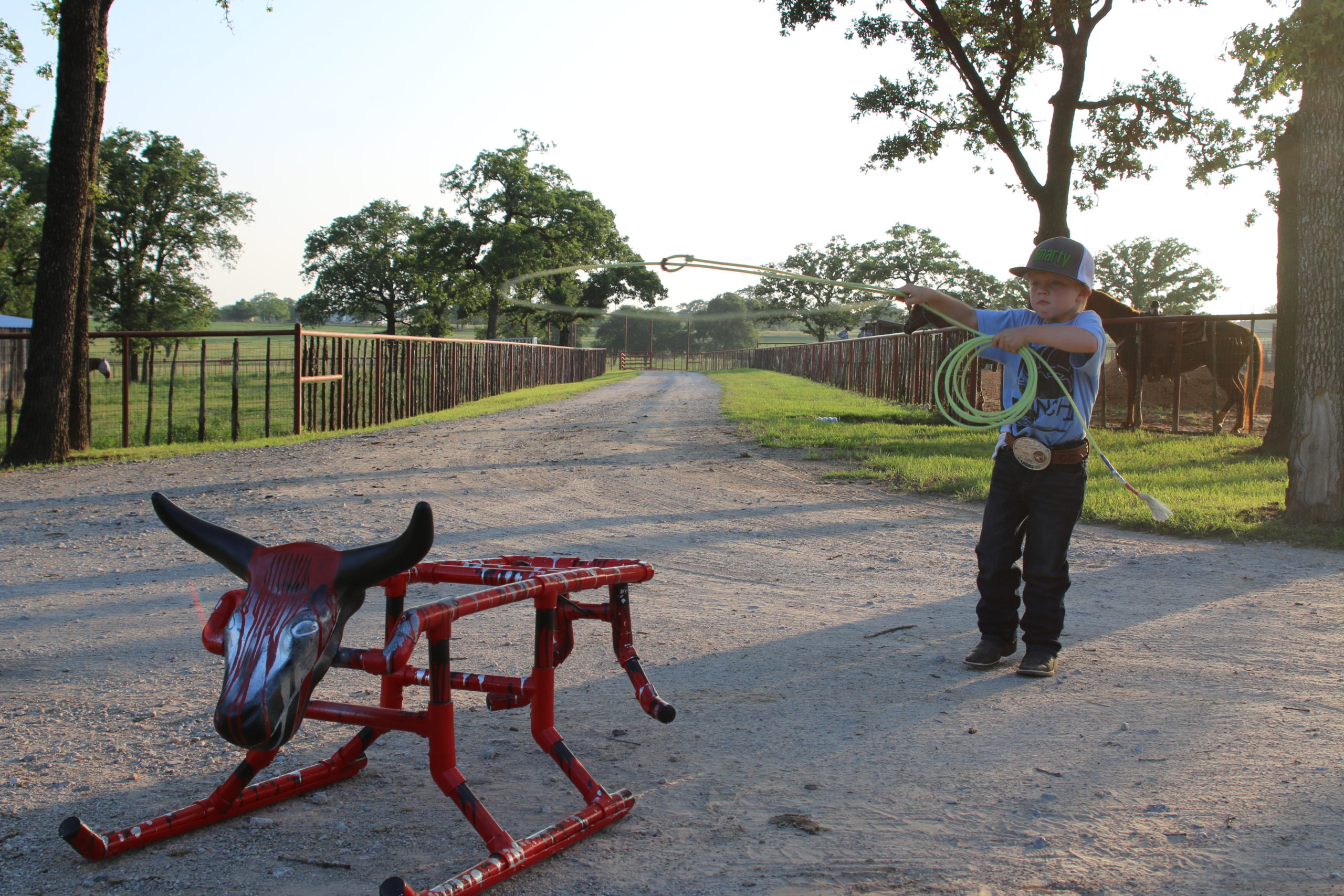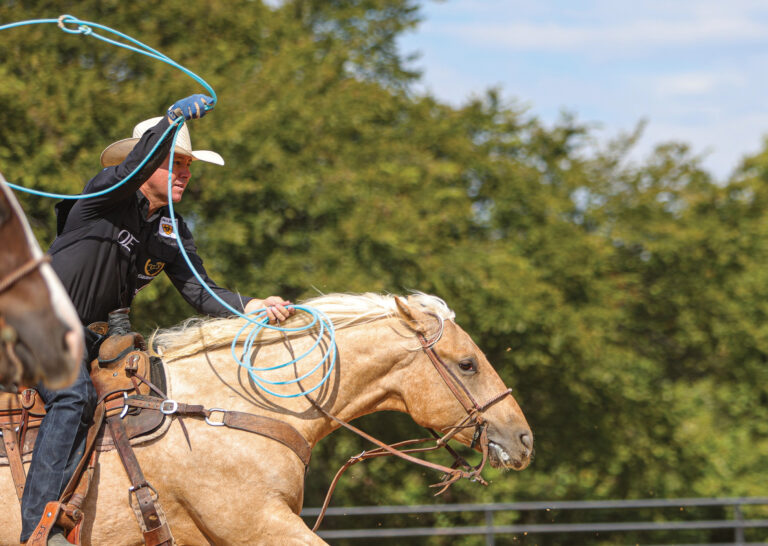Expectations
All ages of athletes benefit from tailored types of coaching that balance pushing them past comfort and current skill level to improve performance while also providing encouragement and support. Children have these same needs of correction and cheerleading, but applying adult tactics is inappropriate. They are still developing motor skills, emotion regulation, executive functioning, personality, and values.
While we would all chuckle at someone who thought a kindergartner could win the WNFR, our expectations about our children can quickly become unreasonable and cause a great deal of tension in families. We may think that we are being helpful by pushing our children to greatness, but we risk creating a perfect storm for forming stressed-out, anxious kids who are more prone to developing low self-worth, extreme perfectionism, burn-out, and even mental illness.
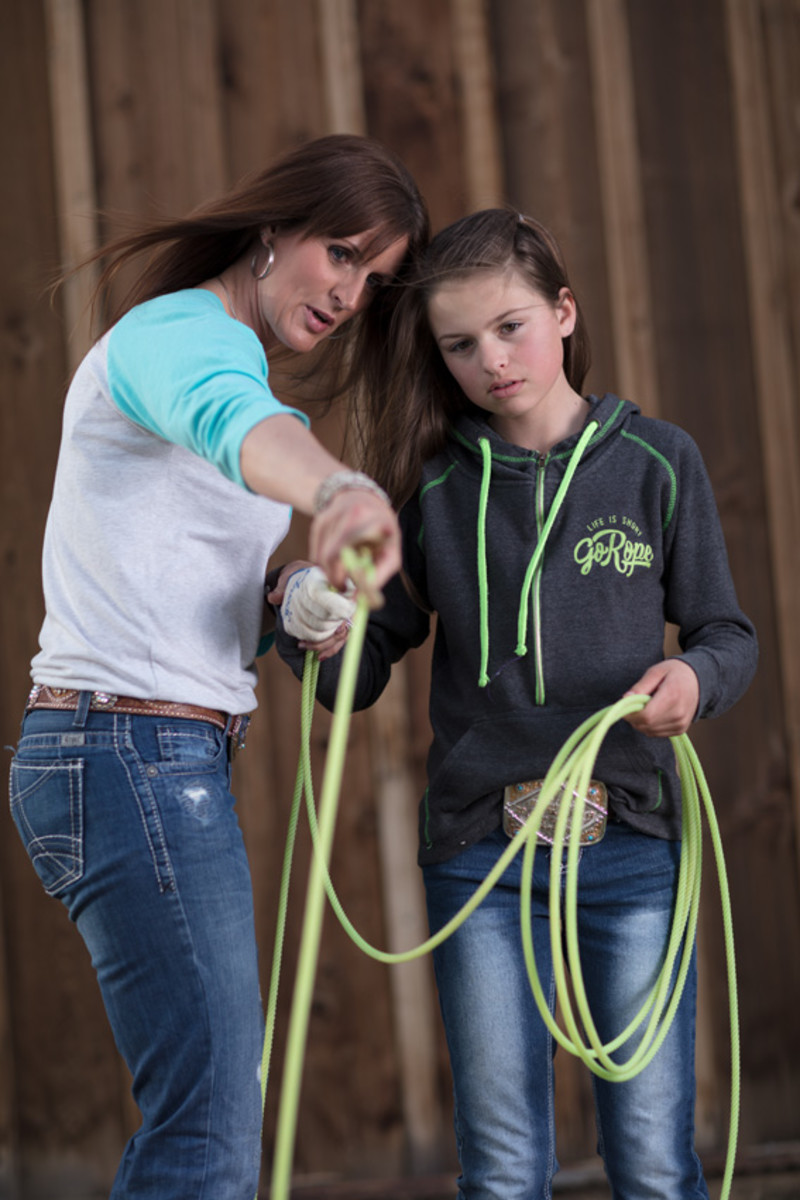
To create accurate expectations, consider your child’s age, emotional capacity, physical capabilities, and current roping skills to decide what level of performance is reasonable. If your kiddo is roping horns 50 percent of the time on doggy steers, don’t put a AAA steer in the chute for him or her and expect a catch. Children need to experience steady improvement to keep motivation high, so help them practice in the Zone of Proximal Development. This is teaching skills that are slightly more difficult than what a child has already mastered, but not so hard that he or she cannot do it with extra help. For example, if your child has been roping the dummy 80 percent of the time four feet away from it, have them step back to five feet away. Help them to change anything that interferes with catching at five feet until they are 80 percent at that distance and then move back again.
A Good Horse Match
It is extremely important for your children to have horses that will support their development. What this looks like is a horse that is sound enough, sane enough, and experienced enough for a child to learn and grow until the child’s abilities warrant upgrading to another, more competitive mount.
Much too often, I see parents with the idea that they will get a colt for their child so that they can “grow together.” Or, they purchase a world-class athlete that leaves the box strong and is a handful to manage, thinking that their kid will win because the horse has a good pay-window history. Frankly, both options are horrible plans. Green colts need advanced riders to learn, and green children need solid horses to learn. High-class horses also tend to have idiosyncrasies that need high-class hands to manage them. Putting a child that cannot ride well on a colt or one that is too advanced both offer prime opportunities for physical injuries and psychological scarring from the wreck that is bound to happen. Just don’t do it.
Winners and Losers
More organizations are increasingly worried about child emotional welfare. In response, there is a growing phenomenon where children are given participation ribbons without tracking scores or announcing winners. Supporters of this movement reason that allowing kids to participate without the pressure of competing creates a more harmonious atmosphere. While I am the first person to support and enhance child emotional welfare, the “participation ribbon” sensation is frankly a huge disservice once children become skillful in their sporting events.
Our entire nation is based on competition. There is competition for good colleges, well-paying jobs, and resources, in general. While this is certainly not news to you, team roping is also a competition. With any competitive event, there will be winners, placers, and losers. On any given day, you might fall into any of those categories, regardless of how many trophy buckles have adorned your belt. Children need to learn how to win and lose for them to be good competitors (and good people). The only way to do that is to allow them the opportunities to have their hearts set afire from a win or broken from a loss, and then have a good role model to help them learn how to do both gracefully.
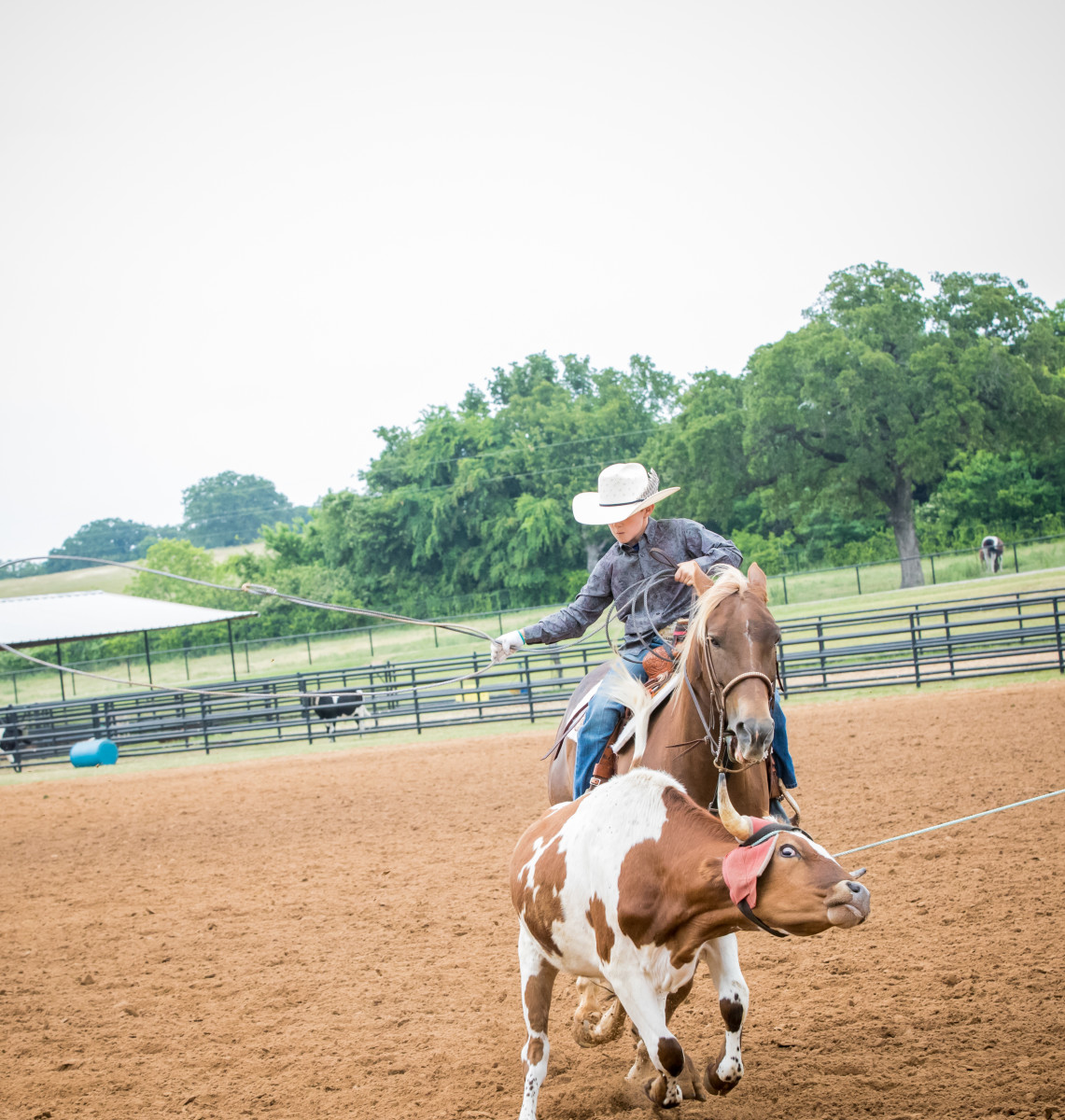
Emotional Overload
All of us are at risk for allowing emotions to overtake us when practice or competition is going awry. Children are especially prone to large emotional melt-downs when they feel frustrated or discouraged. The reason for this is that the frontal lobe (the front of the brain, right behind the forehead) is not fully formed until adulthood. One task of the frontal lobe is executive functioning, which is the ability to plan, organize, and control thoughts and actions. The limbic system (found deep within the brain) is a combination of several specific brain structures, and it is responsible for most of our emotional experiences; it is formed early in development. When the limbic system is activated, we need the frontal lobe to keep emotional expression appropriate. Children need specific coaching to use strategies to help them understand, experience, and convey emotions in productive and healthy ways.
The first priority is to do a self-assessment of how you manage your own emotions. If you have a good outlook, know how to handle emotional overload, and can exhibit adaptive behaviors, you are on the right track. However, if you are likely to lose your temper, say hurtful things, or fall into a self-defeating spiral, you are accidentally teaching your children to do the same thing. If this is an area that needs growth within yourself, start with you to be a good role model for your children. Whether you already have these skills or need to practice them yourself, here are some ways to help you and your child manage those pesky negative affective experiences that come up while team roping:
• Identify early triggers. Emotions start small and are often ignored until they are so intense that we erupt. By identifying the beginning of an unpleasant emotion, you are more likely to be able to control it. Good examples of early triggers include: feeling “hot” or other physical sensations, having certain thoughts (such as, “I’m never going to get this right,” or, “I might as well sell my rope horse”), or starting to do things more aggressively (such as running right back to the box after missing, instead of making a game plan before trying again). While coaching your children, look for signs they might be experiencing something similar by observing their actions. For example, a child with slumped shoulders, clenched fists, or who is jerking at the reins is likely feeling an unpleasant emotion.
• Name that emotion. Once you identify a trigger, put a name on what you or your child is feeling. Depending on your child’s age and emotional maturity level, he or she may not have a name to accurately describe the emotion. Start by asking your child (or yourself, in the case of your own emotional experience), what he or she is feeling. If your kiddo cannot name it, ask if there was a time he or she felt similarly to try to identify it. If there still isn’t a good descriptive word, offer suggestions about what emotion you think he or she could be feeling. Even if your child is unable to determine a good label for the feeling, you are helping your child increase his or her emotional IQ.
• Give your child some options. Now that you have helped your child identify what he or she is feeling (even if there is not a label for it), give your child some suggestions for coping strategies. There are a multitude of self-soothing and emotion regulation skills that you and your child can utilize. Some suggestions include:
• Return to work only when emotions have subsided. While you or your child is in an emotionally charged state, practice does no good. In fact, it can do damage because our focus is decreased, mistakes are more likely, and we might even do things we regret (such as schooling a horse that does not deserve the “education”). Oftentimes, taking a few minutes to help your child employ emotion regulation strategies allows you both to return to the roping box and make the most out of the rest of your practice session. However, if emotions remain high, it may be time to call it a day and go back to the arena tomorrow. It is important to teach your children that they are not being punished for feeling unpleasant things, but that effectively dealing with those emotions is imperative if you are going to keep working with them.
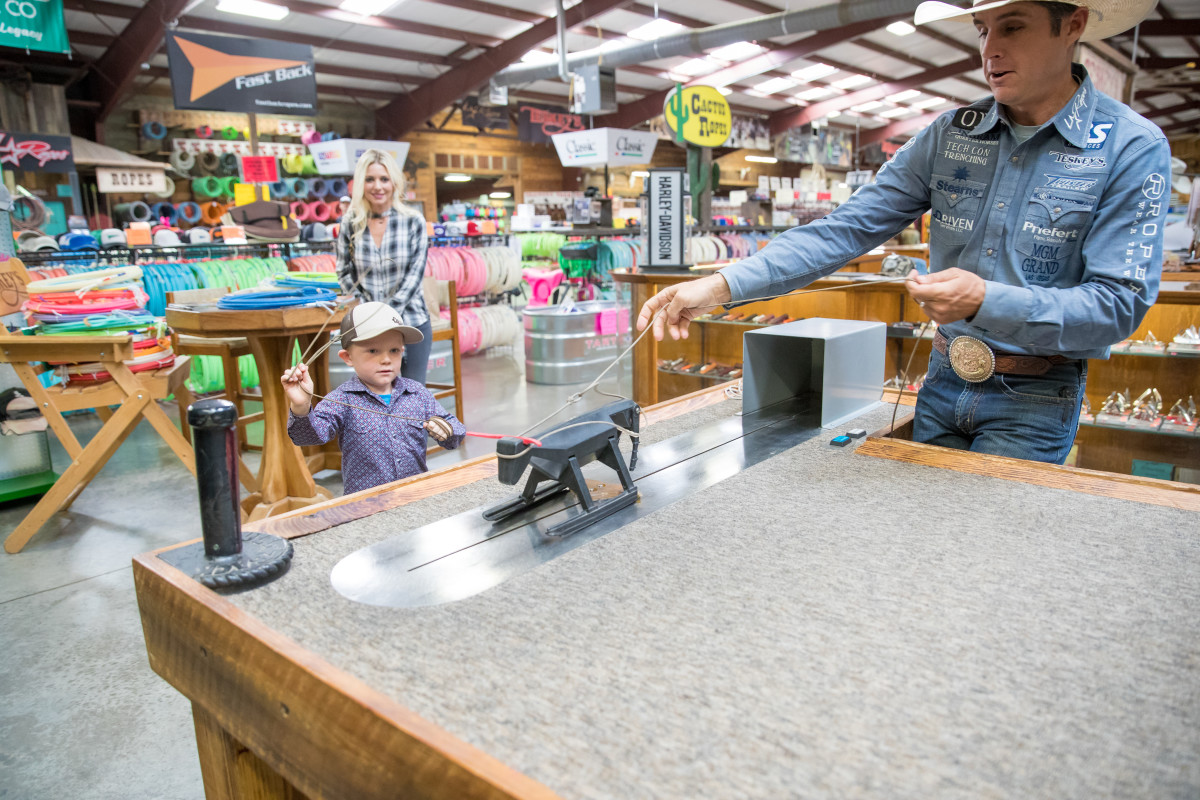
Reinforcement
All creatures, including humans, learn better from reinforcement than punishment. This does not mean that you cannot use punishment; rather, punishment should be used sparingly and should be consistent and immediate when employed. Reinforcement is defined as anything that increases the likelihood of a behavior recurring. All children have different things that are reinforcing based on personal characteristics. For example, if your child is a social butterfly, it is reinforcing to allow him or her time to play with other kids at the rodeo. However, playing with new children is not as reinforcing for an introverted child because he or she feels anxiety in those situations. It is important to use reinforcement that is actually reinforcing to your particular child.
Constructive critical feedback is an important part of coaching, but how it is delivered makes all the difference. While many athletes learn to adapt to coaches that are confrontational and say hurtful things in the pursuit of developing greatness, many children instead internalize the message that they are, “not talented,” or will “never succeed.” Instead of channeling Bobby Knight, consider the proportion of positive and critical feedback you are giving. Aim for a 75 percent positive to 25 percent critical ratio. If you need help tracking this, have another adult make hash marks on a piece of paper while you are coaching your child to have an accurate count. You can also deliver criticism in the form of a “positive sandwich,” where you point out what your child did well first, then tell him or her what to improve, and end with encouragement. This helps to reduce your child’s frustration with making mistakes and increases motivation while correcting problems.
It is also imperative to reward effort instead of just gold buckles. At every level of competition, you can have your best go and still not bring home a check. Tell your children how proud you are of what they did in their run when they performed well, whether the final result is glory or the cryin’ hole. Or point out how hard you know they tried, even though Old Gray stumbled and the rest of the run went south. You will be creating childrenwho see themselves more realistically and are more resilient to the effects of defeat down the road.
Be A Parent First
Children who have parents that are also their coaches can feel intense burden if the coaching becomes paramount. Kids in Little League and other team sports who are being coached by another adult have options of changing teams, having a safe place at home where they are not pressured, or leaving the sport entirely if they do not like it. However, when coach is also mom or dad, parental affection can easily become intermingled with performance until a child believes he or she has to win at team roping to be loved. Clearly, this is damaging. This connection can happen inadvertently and despite good intentions on the part of the parent/coach because children absorb messages they infer from behavior, even if it has not been directly stated. The most important thing is to be a parent first and a coach second.
Some ways to separate your roles include:
• Schedule specific coaching times. Your role as a coach ends at the conclusion of that time.
• Do not discuss team roping performance (good or bad) during family time, such as over dinner.
• Be equally involved in your children’s activities outside of roping.
• Tell your children you love them often and regardless of how they are roping.
• Schedule one-on-one time with your children that doesn’t involve team roping.
If you find that separating these roles is difficult, an option is to find someone else to be a coach. There is no shame in playing to our strengths and learning to compensate for our weaknesses. Sometimes that compensation is outsourcing for the greater good.
Balancing being an incredible parent and a great coach takes time and training. Be patient with yourself and the process. The best parents and coaches are working at it every day, too. n
Disclaimer: This information should not be considered a therapeutic intervention and no client-therapist relationship is established by reading this article.




